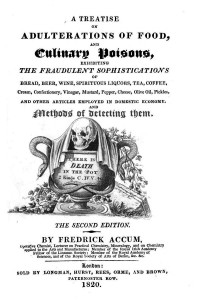- Been waiting a while for this. Conservation of plant biodiversity for sustainable diets. PowerPoint as PDF.
- And this. Agricultural Biodiversity Is Essential for a Sustainable Improvement in Food and Nutrition Security. Open-access paper.
- Follow along with the price spikes in food. On-line data.
- South African seed company bought by Pioneer. Speculative.
Medieval soldiers illuminate modern stunting
A couple of sentences in one of The Economist’s celebrated Christmas articles brought me up short. The article detailed a forensic investigation of soldiers who fell in 14961 at Towton, “perhaps the bloodiest battle ever fought in England”. The good thing about Towton is that a mass grave yielded 40 skeletons, 28 of them complete, which gave the archaeologists unprecedented insights into just what killed those men.
“Imagine one of those movie scenes with people closing in on a cornered individual,” says Christopher Knüsel, one of the original team of archaeologists and now at the University of Exeter. “Usually the camera has to pan away because you cannot show some things. Here you see it.”
Those are not the sentences. These are.
The average medieval man stood 1.71 metres tall—just four centimetres shorter than a modern Englishman. “It is only in the Victorian era that people started to get very stunted,” says Mr Knüsel.
I’ve always thought that medieval people were stunted too. But because I recently started to dip into the history of agriculture and food production in England, my mind was prepared for the idea of Victorian stunting. 1 The average height of young English soldiers born in the 1850s was about 3 cm lower than those born in the 1730s. And not just English soldiers either; the phenomenon was pretty widespread, in Europe and America. 2
Many factors contributed. Food consumption per person started to climb around 1825, but did not equal 16th century levels until about 1850. After 1850, farm productivity stagnated. Populations at the time were still growing rapidly. The wonder is that there was not more widespread hunger. As Robert C. Allen noted: 3
The output of English farms failed to keep pace with population growth. It was international trade, not rising farm productivity, that fed the expanding British population after 1800.
 And then, especially in the fast-expanding cities of England, there was adulteration. I hold no brief for the “no chemicals” brigade, but this is not exactly a modern phenomenon. Alum and chalk in white bread, watered milk and worse than water in beer, red lead in cayenne pepper and cheeses, acorns in coffee; the list goes on and on. Boiling all kinds of greens with a copper coin in the pot maintained the fresh green colour, and has been suggested to me as a handy tip by helpful Italians. This was not new in Victorian times, nor is it over today.
And then, especially in the fast-expanding cities of England, there was adulteration. I hold no brief for the “no chemicals” brigade, but this is not exactly a modern phenomenon. Alum and chalk in white bread, watered milk and worse than water in beer, red lead in cayenne pepper and cheeses, acorns in coffee; the list goes on and on. Boiling all kinds of greens with a copper coin in the pot maintained the fresh green colour, and has been suggested to me as a handy tip by helpful Italians. This was not new in Victorian times, nor is it over today.
Adulteration wasn’t the only problem, as I have indicated, but it was worse in the cities, where people were further removed from produce and more inclined to buy ready-made items. Heights did not decline among army recruits in France, perhaps because of “low levels of urbanization, slow population growth, and wider distribution of property”. 4
And what has all this to do with food today, and why I write about food? Because many of the countries that saw the greatest increases in farm productivity and food output in recent decades, thanks to the Green Revolution, also have some of the highest rates of child stunting in the world today. Stunted children never fully catch up with their properly nourished peers. Like the Victorians, it isn’t just that they don’t have enough to eat. What they do have to eat isn’t very nourishing. They are missing micronutrients, like vitamins and minerals.
Many different solutions exist. Straightforward fortification — adding iodine to salt, for example — can supply missing micronutrients. Breeding higher concentrations of micronutrients into staple crops is increasingly popular and may work, especially for people already in the cash economy. Am I being too cynical if I wonder how soon after the commercial release of, say, high-iron beans, we see traders offering ordinary beans at a premium? Identity preservation is going to be a huge issue for foods bred to contain more micronutrients. Fraud will not be as easy for crops where the added benefit is clearly visible, like extra-orange varieties, with their heavier cargo of vitamin A precursors. The seed market too is not above dodgy practices. Plant breeders now have a shiny new tool to analyse mineral levels in seed crops; will poor farmers buying seed have any guarantee that they are paying for the real thing? Caveat emptor? How about even poorer farmers, who do their own seed saving and plant breeding? How are they going to select the seed for next year’s crop if its superior qualities are effectively invisible?
These are not mere quibbles. Breeding higher levels of micronutrients into staples is said to be sustainable, targeted and cost-effective; is it as sustainable, targeted and cost effective as more diverse diets embedded in a fresh approach to the entire food system? I don’t know. Nobody does, although evidence is slowly accumulating in dribs and drabs.
- “Low dietary diversity is a predictor of child stunting in rural Bangladesh.”
- “Household Dietary Diversity and Food Expenditures Are Closely Linked in Rural Bangladesh, Increasing the Risk of Malnutrition Due to the Financial Crisis.”
The Battle of Towton may not have been an entirely fair fight and, as usual, the victors wrote the history. Are there lessons there?
 This post was invited by Nicola Twilley, new food editor at GOOD, as a contribution to a series called Food for Thinkers. Speaking of which, here’s a thought: chocolate for breakfast tops a list of food trends selected by “experts”.
This post was invited by Nicola Twilley, new food editor at GOOD, as a contribution to a series called Food for Thinkers. Speaking of which, here’s a thought: chocolate for breakfast tops a list of food trends selected by “experts”.
Nibbles: IK, Fragaria, Citrus, Millet breeding, Vitis, Agricultural biodiversity, Satellite imagery, Subsistence
- Indigenous knowledge of agrobiodiversity makes the news in Indonesia.
- Reconstructing the strawberry.
- And reconstructing the history of cultivated citrus fruits.
- ICRISAT millet breeders get an a new toy.
- Plenty of diversity in the cultivated grape still. And it’s going to need it.
- Biodiversity (and agrobiodiversity?) needed for farm productivity. Well I never! But more mixed results available too. What’s a poor boy to think?
- SPOT 5 imagery can be used to identify crops. In Texas. But in Tanzania?
- Agricultural biodiversity and subsistence traditions, Part 2. In the Ozarks. But in Omo? (And here’s Part 1.)
Nibbles: Genebank, Rice, State of the World, Experiments, Lathyrus, Malaria and lactase persistence, Advice, CWR, Feed
- The Ethiopian Institute of Biodiversity has been up to something, but it is hard to be sure what.
- IRRI is also up to something — Green super rice — but again it is hard to be sure what. Not golden at any rate.
- CIAT picks its favourites from the State of the World 2011 report.
- More than anyone has any right to want to know about the history and future of agricultural experimentation, but fascinating nonetheless.
- The nutritive value and toxicity of grasspea and its relatives.
- Milk may or may not provide some protection from malaria.
- Nutrition advice, filtered for you. Jeremy sez “I like No. 6.”
- Irish launch crop wild relatives website.
- The feed quality of crop residues gets the treatment.
Blue maize and its proteins
I’ve only just subscribed to the INFOODS Electronic Discussion Group, so I’m not sure how active it is, but two interesting queries came in yesterday, so I’m hopeful. One was about how much bioavailable iron there may be in the juice you get when cooking beans. The other is about infraspecific differences in nutritional quality, which is a topic close to our agrobiodiversity-fueled heart. I’ll take the liberty of quoting the query in full, in case any of our readers has an answer:
Does anyone have the amino acid profile (PHE specifically) for blue corn 5? Looking at the USDA info for corn flour, whole-grain, *white* and corn flour, whole-grain, *yellow* they both have the same amount of protein (6.93 gm) and PHE (340 mg) per 100 gm. The *blue* corn whole-grain flour, however, has 8.75 gm pro/100 gm and the amino acid values are not listed.
I found a journal article that states blue corn is a more complete source of protein than either yellow or white and has elevated levels of lysine and tryptophan as compared to the other 2 (~0.8 mg/gm more LYS; doesn’t say amount for TRP). Could the additional protein be coming from the higher LYS and TRP and the PHE be the same as white/yellow or might the % PHE be significantly different based on percentages/amounts of the other amino acids?
Regards,
Belkys Prado RD CSP LD
Metabolic Nutritionist
St Joseph’s Children’s Hospital of Tampa
Tampa, FL